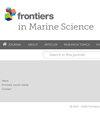High-resolution monitoring of Salish Sea estuarine communities through participatory science
IF 3
2区 生物学
Q1 MARINE & FRESHWATER BIOLOGY
引用次数: 0
Abstract
Agents of global change, such as climate disruptions, habitat loss, and biological invasions, affect nearshore and intertidal ecological communities in acute and chronic ways. Biological monitoring aims to track the changes in ecological communities over time, yet temporal mismatches between sampling regimes, environmental stressors, and corresponding ecological responses of interest often limit the utility of monitoring data for testing hypotheses related to these changes. Participatory science, alternatively “citizen science”, can increase the geographic and temporal scale of monitoring and can be a tool to address this limitation. By improving statistical power through higher resolution and a larger scale of data, participatory science programs can detect how global change alters highly dynamic ecological communities. In this study, we evaluate insights from a participatory science dataset (Washington Sea Grant Crab Team) on nearshore mobile epifaunal communities in the Salish Sea, how they differ across habitat types and over time and how they responded to an atmospheric heatwave. Nearshore communities varied across channel, lagoon, and tideflat habitat types, with community metrics and species identities aligning with the environmental characteristics of each habitat type. Though these communities experience high seasonal variability, habitat type differences were consistent over the seven years of data collected. While some sites did experience extreme excursions of water temperature as a result of the 2021 atmospheric heatwave, neither short- nor long-term impacts were detected in the ecological communities monitored at the regional scale. Two factors are likely important in this conclusion: 1. We monitored mobile epifauna, which may be able to migrate to mitigate extreme events and 2. Water temperatures during the heatwave rarely exceeded those experienced at the sites during other times of year. The seasonal variability of the ecological communities observed in these dynamic environments suggests avoiding snapshot sampling in favor of an approach that offers high temporal resolution, as some participatory science programs can, to be able to accurately disentangle effects of acute stressors from the noise of natural variability.通过参与式科学对萨利希海河口群落进行高分辨率监测
全球变化的因素,如气候破坏、栖息地丧失和生物入侵,以急性和慢性的方式影响近岸和潮间带生态群落。生物监测旨在追踪生态群落随时间的变化,然而采样制度、环境压力源和相应的生态反应之间的时间不匹配往往限制了监测数据在测试与这些变化相关的假设方面的效用。参与式科学,或者“公民科学”,可以增加监测的地理和时间范围,并且可以成为解决这一限制的工具。通过更高的分辨率和更大规模的数据来提高统计能力,参与式科学项目可以发现全球变化如何改变高度动态的生态群落。在这项研究中,我们评估了参与性科学数据集(华盛顿海格兰特蟹团队)对萨利希海近岸移动的地外群落的见解,它们在栖息地类型和时间上的差异以及它们如何应对大气热浪。近岸群落在水道、泻湖和潮滩生境类型之间存在差异,群落指标和物种特征与每种生境类型的环境特征相一致。尽管这些群落经历了很高的季节变化,但在收集的7年数据中,栖息地类型的差异是一致的。虽然2021年的大气热浪确实使一些地点的水温发生了极端变化,但在区域尺度上监测的生态群落中没有发现短期和长期的影响。在这个结论中,两个因素可能很重要:我们监测了移动的表层动物,它们可能会迁移以减轻极端事件和2。在热浪期间,水温很少超过一年中的其他时间。在这些动态环境中观察到的生态群落的季节变化表明,避免快照采样,而采用一种提供高时间分辨率的方法,就像一些参与性科学项目可以做到的那样,能够准确地从自然变化的噪音中分离出急性压力源的影响。
本文章由计算机程序翻译,如有差异,请以英文原文为准。
求助全文
约1分钟内获得全文
求助全文
来源期刊

Frontiers in Marine Science
Agricultural and Biological Sciences-Aquatic Science
CiteScore
5.10
自引率
16.20%
发文量
2443
审稿时长
14 weeks
期刊介绍:
Frontiers in Marine Science publishes rigorously peer-reviewed research that advances our understanding of all aspects of the environment, biology, ecosystem functioning and human interactions with the oceans. Field Chief Editor Carlos M. Duarte at King Abdullah University of Science and Technology Thuwal is supported by an outstanding Editorial Board of international researchers. This multidisciplinary open-access journal is at the forefront of disseminating and communicating scientific knowledge and impactful discoveries to researchers, academics, policy makers and the public worldwide.
With the human population predicted to reach 9 billion people by 2050, it is clear that traditional land resources will not suffice to meet the demand for food or energy, required to support high-quality livelihoods. As a result, the oceans are emerging as a source of untapped assets, with new innovative industries, such as aquaculture, marine biotechnology, marine energy and deep-sea mining growing rapidly under a new era characterized by rapid growth of a blue, ocean-based economy. The sustainability of the blue economy is closely dependent on our knowledge about how to mitigate the impacts of the multiple pressures on the ocean ecosystem associated with the increased scale and diversification of industry operations in the ocean and global human pressures on the environment. Therefore, Frontiers in Marine Science particularly welcomes the communication of research outcomes addressing ocean-based solutions for the emerging challenges, including improved forecasting and observational capacities, understanding biodiversity and ecosystem problems, locally and globally, effective management strategies to maintain ocean health, and an improved capacity to sustainably derive resources from the oceans.
 求助内容:
求助内容: 应助结果提醒方式:
应助结果提醒方式:


